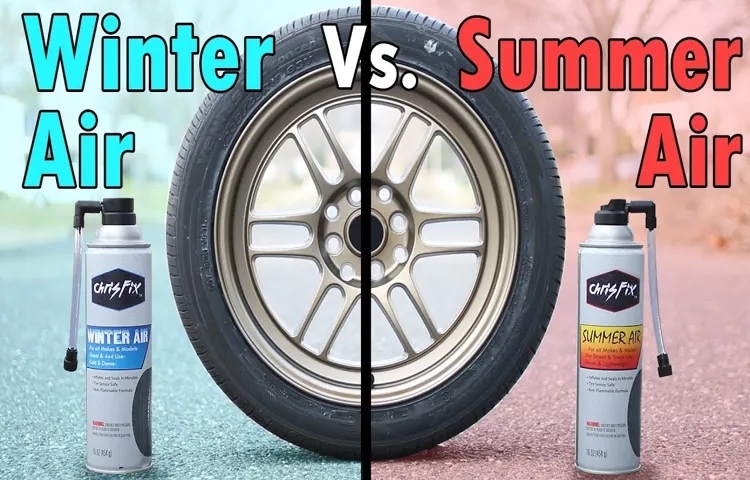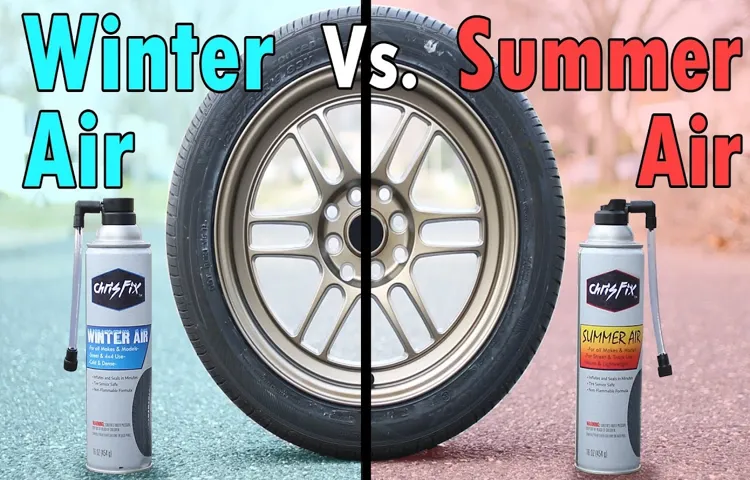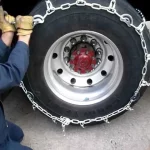Picture this: you’re getting ready for a long drive and you notice the tires on your car look a bit flat. You go to inflate them, but no matter how much air you put in, they just won’t fill up. Frustrating, right? Many drivers have experienced this issue and the reasons behind it may surprise you.
In this blog, we’ll explore some of the most common causes for tires not inflating, and what you can do to prevent it from happening in the future. From punctures and leaks to faulty valves and rims, we’ve got you covered. So, buckle up and let’s get started on diagnosing your tire troubles!
Table of Contents
Low Tire Pressure
If you’re wondering why air won’t go into your tire, the most common culprit is low tire pressure. Low tire pressure happens when the air inside your tire seeps out gradually over time, or when you have a puncture or leak. It’s essential to keep your tire pressure level within your manufacturer’s recommended range to ensure optimal driving performance and safety.
If your tires appear flat or feel spongy, the first thing you should do is check the pressure and inflate them as necessary. You can use a tire pressure gauge to check your levels accurately. Remember that maintaining the right air pressure in your tires contributes to better fuel efficiency, longer tire life, better handling, and a smoother ride.
If you’re having trouble inflating your tires, it may be because of a faulty valve stem, a clogged valve core, or a malfunctioning air compressor. It’s best to consult a professional mechanic to diagnose and fix the issue effectively. Don’t delay getting your tire pressure checked regularly to ensure your safety on the road.
Improper Valve Stem Placement
Improper valve stem placement can lead to low tire pressure, causing a range of problems for drivers. When the valve stem is not positioned correctly, air may escape from the tire, resulting in underinflation. This can affect the performance of your vehicle, making it less fuel-efficient and increasing the risk of accidents.
In addition, low tire pressure can damage the tires themselves, leading to wear and tear that can shorten their lifespan. It’s important to ensure that your valve stems are installed properly and checked regularly to prevent issues with tire pressure. If you notice that your tire pressure is low, be sure to inspect the valve stems for any signs of damage and have them repaired or replaced as needed.
By maintaining proper pressure in your tires, you can enjoy a smoother, safer ride and avoid costly repairs or replacement of your tires.

Damaged Tire or Rim
Low tire pressure is a common issue that drivers face, and it often results in a damaged tire or rim. When your tires are not inflated to the recommended level, it can cause all sorts of problems such as decreased fuel efficiency, uneven tire wear, and more. If you notice that your tire pressure is low, it’s important to address the issue as soon as possible.
This might involve simply adding air to your tires, but it could also indicate a more significant issue such as a puncture or leak. In any case, it’s essential to take care of the problem immediately to avoid further damage to your vehicle. Remember to regularly check your tire pressure, especially during the colder months when the air pressure can drop more rapidly.
By doing so, you’ll increase the lifespan of your tires and keep your car running smoothly.
Solutions to Inflate Tires
If you’re wondering “why won’t air go in my tire,” there could be several reasons why you’re experiencing difficulty inflating your tires. One possible culprit could be a damaged or malfunctioning valve stem. This is the part of the tire that connects to the air pump hose and can sometimes become clogged or corroded.
Another reason could be an issue with the air pump itself, such as low pressure or a faulty gauge. Additionally, it’s possible that the tire is simply too worn out or damaged to be safely inflated and may need to be replaced entirely. Whatever the reason, it’s important to address the issue promptly to ensure your safety while driving.
Use a Tire Pressure Gauge
One of the best solutions to inflate your tires is by using a tire pressure gauge. This is an essential tool for measuring tire pressure accurately and quickly. Without it, you might not know the right amount of air to add to your tires.
A pressure gauge works by reading the air pressure inside the tire and displaying it on a digital or analog screen. It is important to use a gauge because underinflated or overinflated tires can cause serious problems while driving. Low tire pressure can lead to poor fuel efficiency, reduced tire performance, and even blowouts.
On the other hand, overinflated tires can be equally dangerous and lead to reduced handling, increased wear and tear on the tires, and less traction on the road. Using a tire pressure gauge is an easy and affordable solution to keep your tires inflated to the right level for a smooth and safe ride.
Replace Damaged Tires or Rims
When it comes to maintaining your vehicle, one of the most crucial aspects to consider is the condition of your tires and rims. Damaged tires or rims can greatly affect your car’s performance, stability, and safety on the road. Fortunately, there are several solutions available for inflating tires and getting you back on the road.
One option is to use a portable air compressor or tire inflator, which can quickly and efficiently inflate your tires to the proper pressure. Another solution is to use a tire sealant product, which can temporarily seal punctures in your tire’s sidewall or tread. However, it’s important to keep in mind that these solutions are only temporary fixes, and damaged tires or rims should ultimately be replaced as soon as possible.
Regularly checking the condition of your tires and rims, as well as ensuring they are properly inflated, can help extend their lifespan and prevent costly damages or accidents on the road. Remember, taking care of your vehicle’s tires and rims is essential for a safe and comfortable driving experience.
Visit a Professional Mechanic
If you want to properly inflate your tires, it’s always recommended to visit a professional mechanic. They have all the necessary tools and expertise to ensure that your tires are inflated correctly, so you don’t have to worry about operating your car with underinflated or overinflated tires. In addition, they can inspect your tires for any damage or wear that may be affecting their performance.
Once you’ve visited a mechanic and received their recommendations, you can then decide which solution is best for you when it comes to inflating your tires. This may include simply using your car’s built-in tire inflator, purchasing a separate tire inflator, or using a gas station pump. Ultimately, the key is to make sure your tires are properly inflated to ensure your safety and the longevity of your tires.
Preventing Future Issues with Tire Inflation
“Why won’t air go in my tire?” is a common question and can have multiple reasons. It could be due to a faulty valve stem, a clogged air passageway, or even issues with the tire pressure gauge. However, preventing future issues with tire inflation can ensure that the tires maintain their optimal pressure for a longer time.
Regularly checking the tire pressure, using a high-quality tire pressure gauge, and filling the tires with the manufacturer-recommended pressure are some simple steps that can be taken to prevent issues. Additionally, avoiding over-inflation and under-inflation of tires can also prevent future problems. By taking these preventive measures, one can ensure smooth rides and avoid high repair bills caused by issues with tire inflation.
Check Tire Pressure Regularly
Tire Pressure Keeping your tires well-inflated is one of the simplest yet most important things you can do to prevent future issues with your vehicle. Regularly checking your tire pressure can save you money in the long run by improving your gas mileage and extending the life of your tires. Not only will properly inflated tires save you money, but they can also keep you safer on the road by improving your vehicle’s handling and reducing the risk of a blowout.
It’s important to keep in mind that tire pressure can fluctuate due to changes in weather, so it’s important to check regularly, especially before a long drive. So next time you’re at the gas station, take a few extra minutes to check your tire pressure. Trust me, your wallet and your safety will thank you.
Properly Inflate Tires
Properly inflating your tires is vital not only for optimal vehicle performance but for your safety as well. Driving on overinflated or underinflated tires can lead to wear and tear, decreased fuel efficiency, and even accidents due to loss of control. To prevent these future issues, it’s important to check your tire pressure regularly and inflate them according to the manufacturer’s recommendations.
Don’t solely rely on the “eyeball test” or the appearance of the tires. Instead, use a tire pressure gauge to ensure that each tire is inflated to the proper level. By taking a few minutes to check and adjust your tire pressure, you can avoid unnecessary expenses and keep your vehicle functioning at its best.
So, remember to always keep your tires properly inflated – it’s a small step that can make a big difference in maintaining your vehicle and ensuring your safety on the road.
Conclusion
In conclusion, the reason why air won’t go in your tire is simply because the tire is stubborn and doesn’t want to accept new air. Just like some people refuse to change their beliefs or behaviors, your tire is sticking to its old ways. So, it’s up to you to convince your tire to embrace change and accept the fresh air it so desperately needs.
Good luck!”
FAQs
What could be the reasons behind my tire not holding air?
Tire punctures, valve stem issues, bead leaks, or rim damage can be some of the reasons behind your tire not holding air.
Can temperature changes affect tire pressure and cause air loss?
Yes, high temperatures can cause air pressure to rise, and low temperatures can cause air pressure to drop, leading to air loss in tires.
Is it safe to drive with underinflated tires?
No, driving with underinflated tires can cause poor handling, reduced fuel efficiency, and even tire blowouts, which can result in accidents.
Can overinflated tires also cause problems?
Yes, overinflated tires can lead to uneven tire wear, reduced traction, and even tire blowouts, causing unsafe driving conditions.
How can I check my tire pressure correctly?
Use a tire pressure gauge to check the pressure when the tires are cold, and ensure that the pressure matches the manufacturer’s suggestion listed on the driver’s door or in the owner’s manual.
Can I fix a punctured tire myself?
In most cases, it is not recommended to fix a punctured tire yourself as it can be unsafe. It is best to have a professional examine the tire and fix it based on their expert opinion.
How often should I check my tire pressure?
It is recommended to check tire pressure at least once a month, and before going on long trips to ensure that the vehicle is safe to drive.



